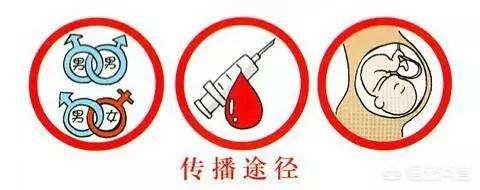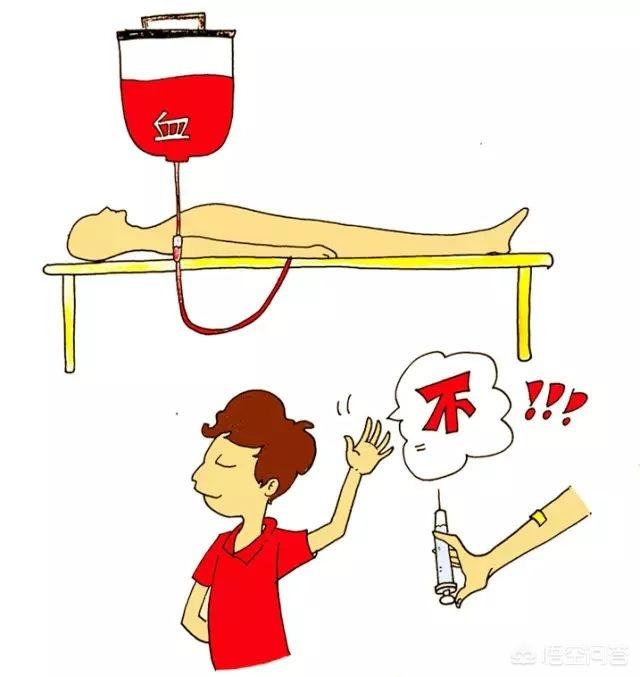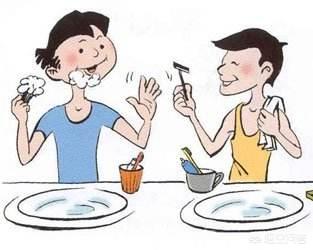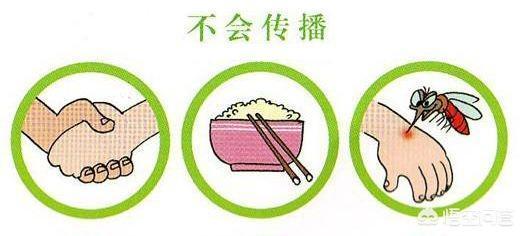HIV dies easily when exposed to air, so why is sharing a razor easy to transmit?
This question asked me a little overwhelmed, accurately can share razor infected with AIDS, then it really is the hand black + water reversal + pour eight lifetimes of bad luck, unless the AIDS person with a razor when scraped a large mouth, blood flow, and then you continue to use, pay attention to immediately, otherwise dry a few hours HIV are inactivated. Post a few HIV transmission routes and chances.
1. Blood transfusion, single infection rate 92.5%!
2. Shared needles, single infection rate 0.63 per cent
3. Unprotected intimacy with a person recognized as having AIDS in the opposite sex is 0.04% for men and 0.08% for women.
4. Unprotected intimacy with a person recognized as having AIDS who is of the same sex (the chances of infection are negligible for men and women) 0.11% on the attacker's side and 1.38% on the recipient's side.
Source: Centers for Disease Information: CDC - Transmission Risk
~May every good person be favored by fate and live a life free of disease~
This has to do with how HIV is transmitted, which is not normally airborne.
There are two main ways in which AIDS is spread:
1, blood transmission, such as sharing injecting equipment, sharing razors should be in the shaving will be through the cut skin, into the blood, leading to infection. Such as Henan Wenlan AIDS village, early years is the sharing of syringes to sell blood led to collective infection.
2, through sexual transmission, so if you want to stay out of harm's way, you have to be clean and protect yourself.
The reason for not sharing razors is to prevent the problem of the possible spread of AIDS once the razor is contaminated with the blood of an AIDS patient. Does this proposition hold water? It depends critically on the ability of the AIDS virus to survive in isolated blood.
Several research organizations have demonstrated that the length of time a virus survives in isolated blood is determined by the amount of virus in the isolated blood. Blood with a high viral content remains viable when it is not dried out, even after 96 hours at room temperature. Even a drop of blood the size of the tip of a needle can still be continuously replicated by HIV if it encounters fresh lymphocytes. Even if it dries up for 2 to 4 hours, once placed in a culture, it can still enter the lymphocytes it encounters and continue to replicate. Blood with a low viral load loses its viability after two hours of natural drying.
According to the above conclusion, if the razor is contaminated with blood from an AIDS patient; if the interval between the contamination of the razor and the next user does not exceed two hours; and if the next user is cut by the razor and the contaminated blood from the razor merges with the blood from the user's wound, then the next user is at risk of being infected with HIV.
At present, there are many studies on the survival conditions of HIV, and the conclusions are not all the same. The above statement is limited to the laboratory environment, theoretical inference only. According to the U.S. Centers for Disease Control and Prevention (CDC), in a laboratory setting, the activity of HIV-containing blood decreases by 99% after a few hours of drying. Outside of a laboratory setting, the chances of infection from HIV-containing blood in isolation are virtually nil.
The ability of HIV to survive outside the body is extremely poor. There is a general consensus that it is not easy to survive away from the human body. However, the length of time the virus lives under various conditions, there is a different understanding of the statement, the United States CDC on the infectivity of the virus outside the body of the basically negative attitude, but in the reference to the "decline of 99%" and "almost zero", are not an absolute concept.
HIV dies easily when exposed to air, so why is sharing a razor easy to transmit?
Thanks for the invitation. Sharing a razor carries the risk of transmitting HIV and hepatitis B. The simple understanding is that the razor may produce tiny wounds that come into contact with blood, not visible to the naked eye.
Being infected with AIDS is unfortunate, a fatal blow to both the individual and the family, and society is trying to find ways to help! The emphasis is on prevention, standardized blood transfusion, safe sex, mother-to-child interruption, and education for all! Tackling the treatment of AIDS is also an urgent task facing medicine.
AIDS is all around us, everyone should have a sense of protection, do not take any chances, reduce the chances of HIV transmission, reduce the incidence of AIDS, everyone has the responsibility and responsibility. Other people's behavior is uncontrollable, can only restrain themselves, is the most reliable. We are all in it!
I do not understand this razor easily infected is who said out of the theory ...... this must be how big a wound ah ...... you think of AIDS patients, he needs to cut in the face how big a cut, all the blood. Wash flow, stop can not stop ...... At this time, you pick up on the use of ...... the same, to their own face also cut a big mouth wow flow of blood ...... and not to mention, there really is so much bleeding You will not immediately bring it to use ...... Let's say that this kind of logic is not even possible, okay! Let's not even talk about razors. Even if it's unprotected intercourse, the chances of getting infected are one in a hundred ...... Remember one thing, and that is, no matter what the route. It's the exchange of bodily fluids that counts. You can't exchange enough fluids. Transmission is not established at all! If a person with HIV realizes they are sick get on medication immediately. After taking antiretroviral drugs, the virus is suppressed. After two consecutive disease load amplification negative, according to the U and U principle. It's not contagious at all ...... let alone if you shave ......
How HIV is transmitted
HIV is present in semen, prostate fluid, vaginal secretions, blood, breast milk and other body fluids of HIV-infected and AIDS patients, and is transmitted in three main ways:

1, sexually transmitted
It is possible to become infected with HIV by having unprotected sexual intercourse (including vaginal, anal and oral sex) with a person infected with HIV or a person living with AIDS. The use of condoms during sexual intercourse can prevent sexual transmission of HIV.
2, Blood Transmission
If blood or blood products contain HIV, the recipient of the transfusion or the user of the blood product may be infected with HIV. For this reason, the State requires that blood and blood products be strictly tested. It is important to go to a regular hospital for medical treatment.
3. Mother-to-child transmission
Women living with HIV or AIDS can infect their fetuses or babies with HIV during pregnancy, childbirth or breastfeeding. During pregnancy, the mother's HIV may pass through the placenta and infect the fetus; during natural delivery, the mother's HIV may pass through the birth canal and infect the baby; and during breastfeeding, the mother's HIV may pass through the breast milk and infect the baby. However, as long as proper testing is done in advance and proper measures are taken in time to prevent mother-to-child transmission of HIV, HIV-infected women or AIDS patients can give birth to and raise healthy babies.
Sharing syringes and needles is a very dangerous behavior
This is because if one person is HIV-infected or HIV-positive, then the other person sharing syringes and needles is at risk of contracting HIV. In formal medical treatment, one person, one syringe and one needle are used only once.

Sharing razors puts you at risk for HIV infection
Shaving razor is easy to cause small wounds in the process of using, if you share the razor with HIV-infected people or AIDS patients, HIV is easy to enter the bloodstream directly through small wounds, and we don't know whether the person you share the razor with carries HIV or whether he or she is an AIDS patient, so there is a risk of contracting HIV by sharing the razor with others.

HIV is not transmitted through everyday contact.
Contact without bodily fluids, such as shaking hands, hugging, kissing on the cheek, or conversing, does not transmit HIV; nor does HIV spread through dishes, clothing, bedding, telephones, towels, washcloths, currency, and water in swimming pools and public baths.

HIV is not transmitted by mosquitoes
The study found that mosquitoes do not bite another person immediately after sucking blood, but take a long time to digest the sucked blood. The amount of blood left on the mosquito's mouth is only 0.0004 milliliters, according to this projection, mosquitoes must have the purpose of biting AIDS patients 2800 times in a row, the blood left on their mouths in order to carry a sufficient amount of HIV. Mosquito blood-sucking is unidirectional, sucking human blood will not be spit out by the esophagus. Although mosquitoes spit out their own saliva when sucking blood, it is spat out through the salivary ducts to keep the sucked blood from clotting. In other words, mosquitoes do not inject the blood they eat into their next prey. Even if a mosquito has just bitten a person with AIDS and then goes to bite another healthy person, the blood of the two will not come into contact with each other, so mosquitoes do not transmit AIDS.
AIDS is not scary. Cutting off the transmission channels of HIV is an effective way to prevent AIDS.
Note: Image from the Internet
There has never been a single case of HIV infection from sharing a razor, so I don't know where you're getting this from. In practice and in theory, you can't get HIV from sharing a razor, not even if you bleed from the shave.
This question and answer are from the site users, does not represent the position of the site, such as infringement, please contact the administrator to delete.